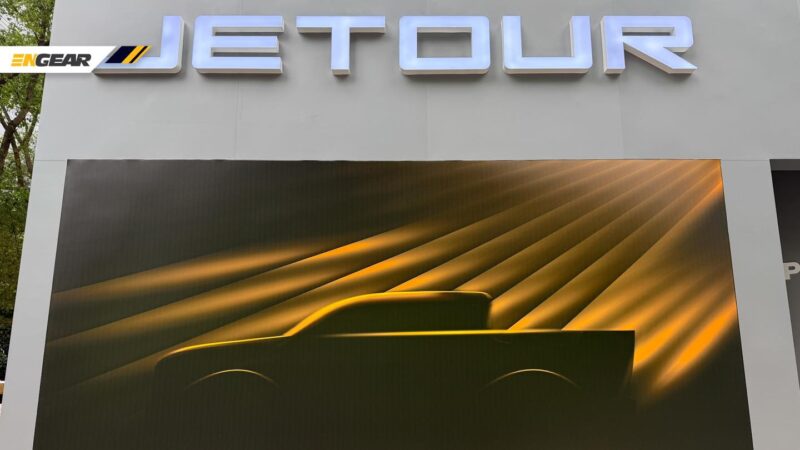At 2025 Auto Shanghai, Jetour showcased a futuristic full-size pickup truck concept model, the F700.
Why do we say it’s futuristic?
The F700 Concept features ‘coach’ style doors similar to those found on luxury models like Rolls-Royce, or suicide doors without a B-pillar in the middle.
Not many people know that Jetour actually displayed a prototype model of the F700, which closely resembles the actual production version at the Hilton Shanghai Hongqiao hotel, which served as the accommodation for global media.
Unfortunately, we were not allowed to take photos of the impressive pickup truck model, as all recording devices and smartphones had to be left outside the giant box.
What we can conclude is that the F700 is essentially the G700 in a pickup version, with a boxy body design and a front structure that is almost the same.
The F700 shares the same platform as the G700 ladder-frame SUV.
According to the specification sheet placed next to the model, the F700 is powered by a 2.0-liter TGDI hybrid engine mated to a hybrid transmission (DHT) and two electric motors (one for each axle).
The F700 is also equipped with a 34.13 kWh battery pack.
The pickup truck chassis is supported by double-wishbone suspension both front and rear, as well as a four-wheel drive (4WD) system.
With the addition of a bed at the rear, the F700 has larger dimensions, measuring 5,495 mm in length compared to the G700’s 5.1 meters, with a wheelbase of 3,350 mm.
So far, the F700 model is still in the development stage, with the actual production version likely to be revealed to the public in the near future.
Jetour G700
